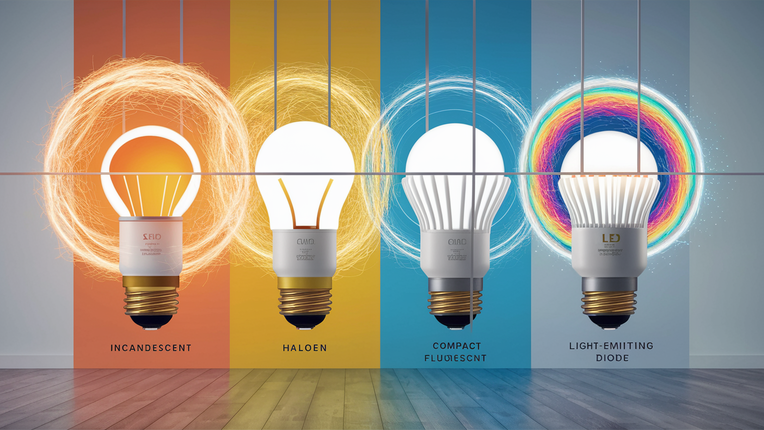 In today's fast-paced world, where technology constantly evolves, the humble light bulb has undergone a remarkable transformation. With an array of options available in the market, choosing the right light bulb can be a daunting task. However, fear not, as we delve into the realm of different types of light bulbs, shedding light on their unique characteristics, applications, and benefits.
In today's fast-paced world, where technology constantly evolves, the humble light bulb has undergone a remarkable transformation. With an array of options available in the market, choosing the right light bulb can be a daunting task. However, fear not, as we delve into the realm of different types of light bulbs, shedding light on their unique characteristics, applications, and benefits.
Incandescent Bulbs
Incandescent bulbs, the pioneers of lighting technology, have been illuminating our lives for over a century. These bulbs produce light by passing an electric current through a thin filament, heating it until it emits light. While inexpensive and widely available, incandescent bulbs are notorious for their inefficiency, as they waste a significant portion of energy as heat.
Halogen Bulbs
A variant of the incandescent bulb, halogen bulbs offer improved efficiency and longevity. By incorporating halogen gas within the bulb, these lights operate at higher temperatures, enhancing both brightness and lifespan. Halogen bulbs find applications in accent lighting, task lighting, and automotive headlights due to their crisp, white light and compact size.
Compact Fluorescent Lamps (CFLs)
Compact Fluorescent Lamps (CFLs) revolutionized the lighting industry with their energy efficiency and longevity. Utilizing a fluorescent tube twisted into a compact shape, CFLs convert electrical energy into light more efficiently than incandescent bulbs, resulting in lower energy consumption and longer lifespan. Although CFLs initially faced criticism for their slow warm-up time and mercury content, advancements in technology have addressed these concerns.
Light Emitting Diodes (LEDs)
Enter the era of Light Emitting Diodes (LEDs), hailed as the pinnacle of lighting innovation. These semiconductor devices emit light when an electric current passes through them, offering unparalleled efficiency, durability, and versatility. LED bulbs consume significantly less energy than traditional alternatives and boast an impressive lifespan, making them ideal for various applications, from residential lighting to commercial and industrial use.
Choosing the Right Light Bulb
Selecting the ideal light bulb depends on several factors, including brightness, color temperature, energy efficiency, and application. Consider the following tips to make an informed decision:
1. Lumens and Brightness
Lumens measure the brightness of a light bulb, with higher lumens indicating brighter light output. Determine the desired brightness level based on the intended use of the space, whether it's ambient lighting for relaxation or task lighting for productivity.
2. Color Temperature
Color temperature dictates the warmth or coolness of the light emitted by a bulb, measured in Kelvin (K). Lower Kelvin values produce warmer, yellow-toned light, reminiscent of candlelight, while higher Kelvin values yield cooler, bluish-white light akin to daylight.
3. Energy Efficiency
Opt for energy-efficient bulbs, such as LEDs or CFLs, to reduce electricity consumption and utility bills. Look for the ENERGY STAR label, indicating that the bulb meets stringent energy efficiency criteria set by the U.S. Environmental Protection Agency (EPA).
4. Application
Consider the specific requirements of the space where the bulb will be used. For instance, dimmable LEDs are ideal for creating ambiance in living rooms and bedrooms, while flicker-free CFLs are suitable for offices and workspaces where visual comfort is paramount.
Conclusion
In conclusion, the world of light bulbs offers a plethora of options to suit every preference and requirement. From the classic charm of incandescent bulbs to the cutting-edge technology of LEDs, each type has its own merits and applications. By understanding the unique characteristics and benefits of different types of light bulbs, you can illuminate your space with efficiency, style, and comfort.
Protect what matters most. Dial 888-805-5456 for the best home security solutions.


